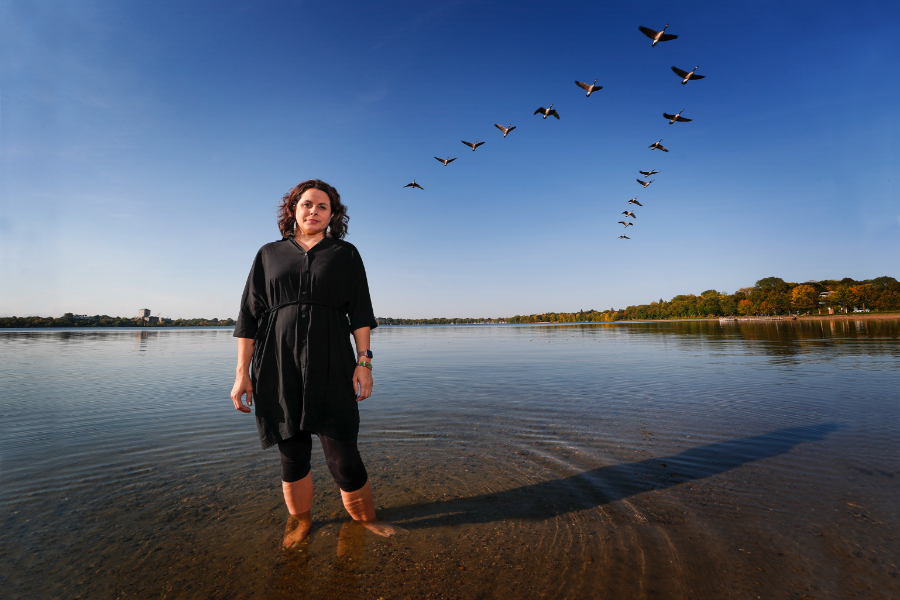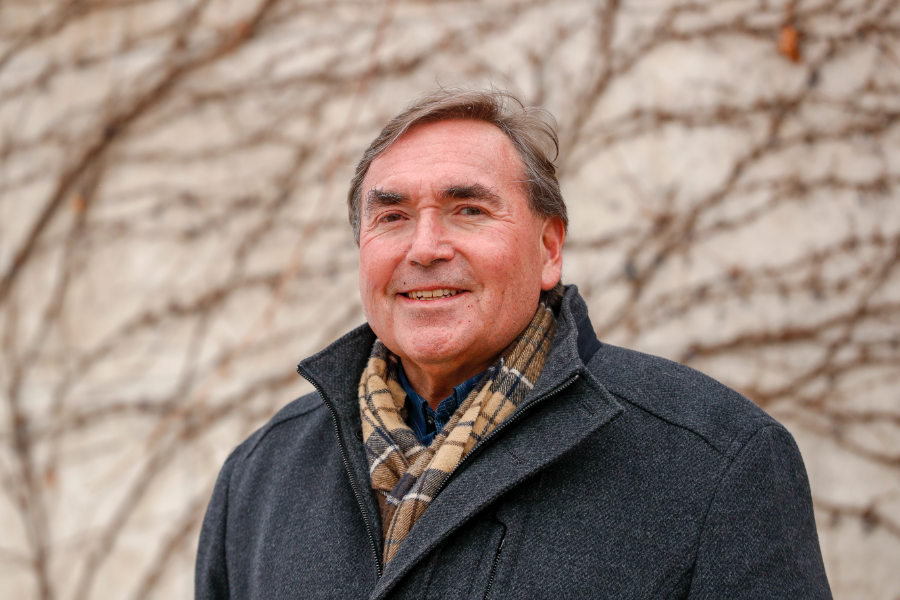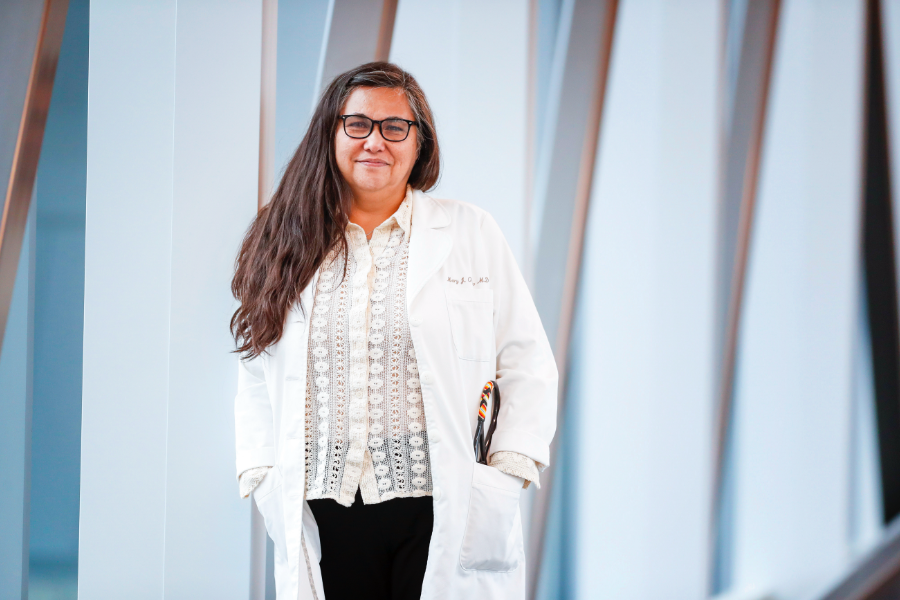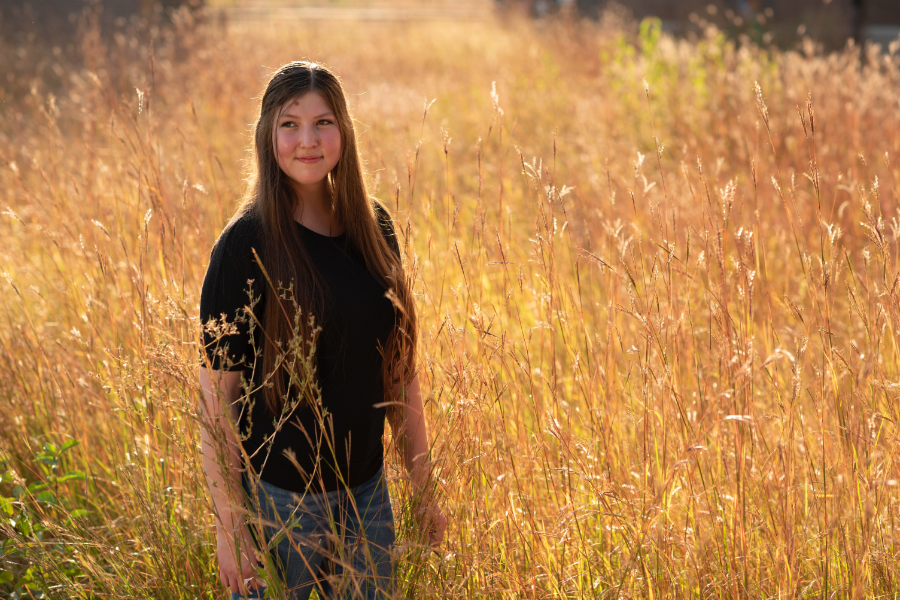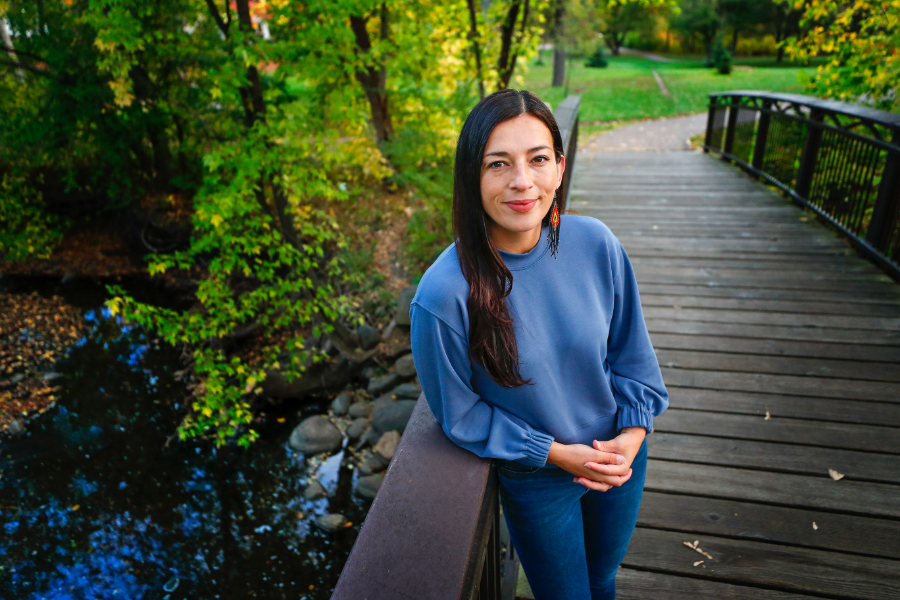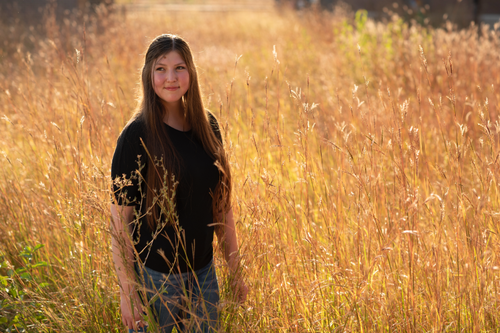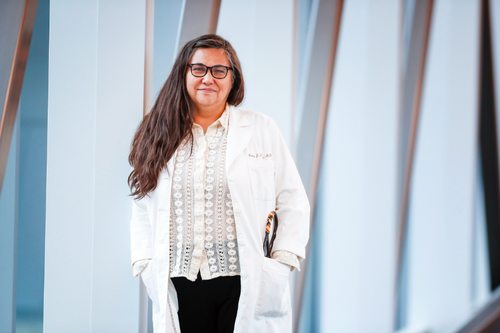Šišókaduta: A keeper of the language
Curious about his Native language as a teenager, Šišókaduta Joe Bendickson learned Dakota at the U of M and now teaches the language to the next generation. He feels he’s in a race against time.
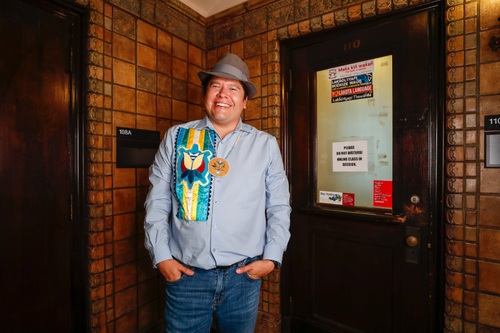
As a child, Joe Bendickson wasn’t exactly immersed in his Native culture. A member of the Sisseton-Wahpeton band of Dakota, he didn’t grow up speaking Dakota, and he was one of only about 10 Indigenous students in a population of about 2,000 at Central High School in St. Paul.
But as a teenager he became more curious about the language. He did a family history and discovered his grandparents could speak it.
“I asked for a Dakota name and my grandfather gave me the name Šišókaduta, and that was very pivotal,” he says. “Because from that point forward I had a name, and I became more and more interested [in the language] as time went on.”
He started taking Dakota language as an undergraduate student at the University of Minnesota in the fall of 1999 with instructor Čhaŋtémaza. “Ever since then, what I’ve gravitated towards is the Dakota language,” Šišókaduta says. “I think for a lot of our younger people, once they get a taste of it, you can see them wanting more and more.”
After Šišókaduta finished four semesters of Dakota language at the U of M, Čhaŋtémaza suggested that he start teaching, because “you need to keep learning to stay ahead of students.” He taught a community education class in South Minneapolis, then studied with a mentor at the Shakopee Mdewakanton Sioux community.
In the early 2000s the University of Minnesota received an infusion of funding from the state for language instruction on the Duluth and Twin Cities campuses. The number of Dakota language classes doubled from four to eight, and Šišókaduta was hired in 2007.
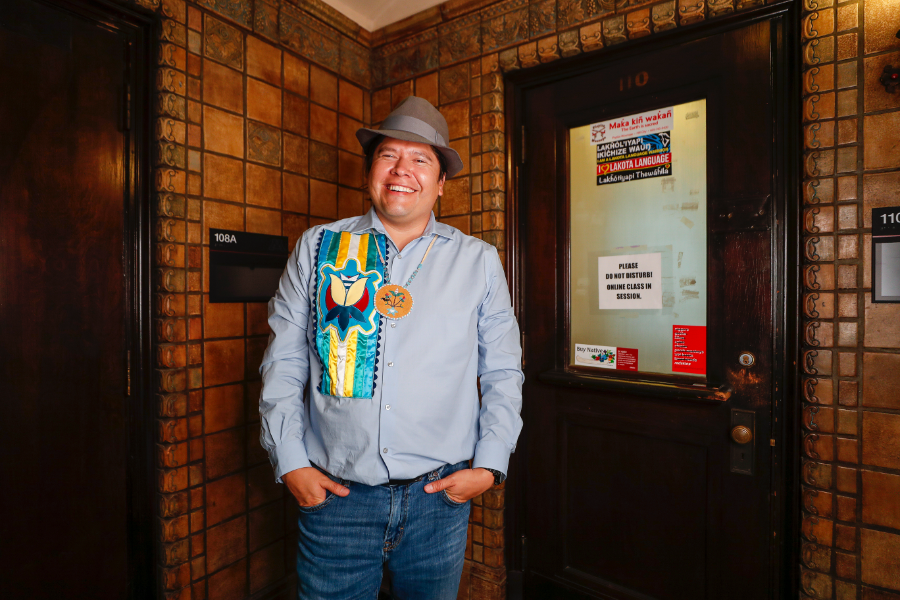
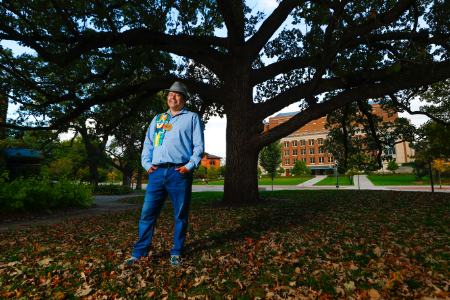
Enrollment grew steadily, and in fall 2018—when Dakota language courses moved to an online-only format—students from Minneapolis to Saskatchewan responded in droves.
“The enrollment basically skyrocketed here,” he says. “And ever since then it’s been hovering at about 50 to 60 students for the introductory courses. … It’s really helped us expand our reach.”
‘You can see there’s an urgency’
While the number of students taking Dakota language classes at the U of M Twin Cities has exploded in the past decade and a half, the number of fluent speakers has flagged—the result of elders passing and the byproduct of a generation of people often forbidden from speaking their Native language during the boarding school era.
Šišókaduta points out that in 2001, a survey showed there were only 38 fluent speakers (who grew up with Dakota as their first language) in the four Dakota communities in Minnesota. That number is now one.
“You can see there’s an urgency,” he says. “When all the elders are gone, what are we going to do then? But we’ve gotta keep going for the next generation.”
He’s doing his part, teaching everyone from PSEO students to elders. “Younger people, in general, they want to learn because they realize this is part of something very important,” Šišókaduta says. “A lot of times you can see it helps them with their self-identity. And I’ve seen it help a lot of people do great things for our people.”
He speaks only in Dakota to his 3-year-old son, who is now starting to say things in Dakota naturally.
“That’s where I get hope—from the younger people,” he says. “We’re not going to make everyone a master speaker. We’re not going to make everyone a teacher. But if we can help some of those people become the next generation of Dakota speakers, I think we’re doing our job here at the University.”
- Categories:
- Education
- American Indian
- Culture and diversity
- Languages
